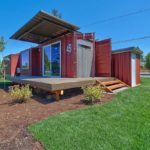Building a house can be one of the most significant investments in a person’s life. Many seek the cheapest way to construct a comfortable and sturdy home. Economical construction methods do not necessarily mean compromising on quality or size. It often involves strategic choices in design, materials, and building techniques.
For those looking to minimize expenses, some of the most cost-effective types of homes to build are ones with simplified designs, like rectangular or square footprints.
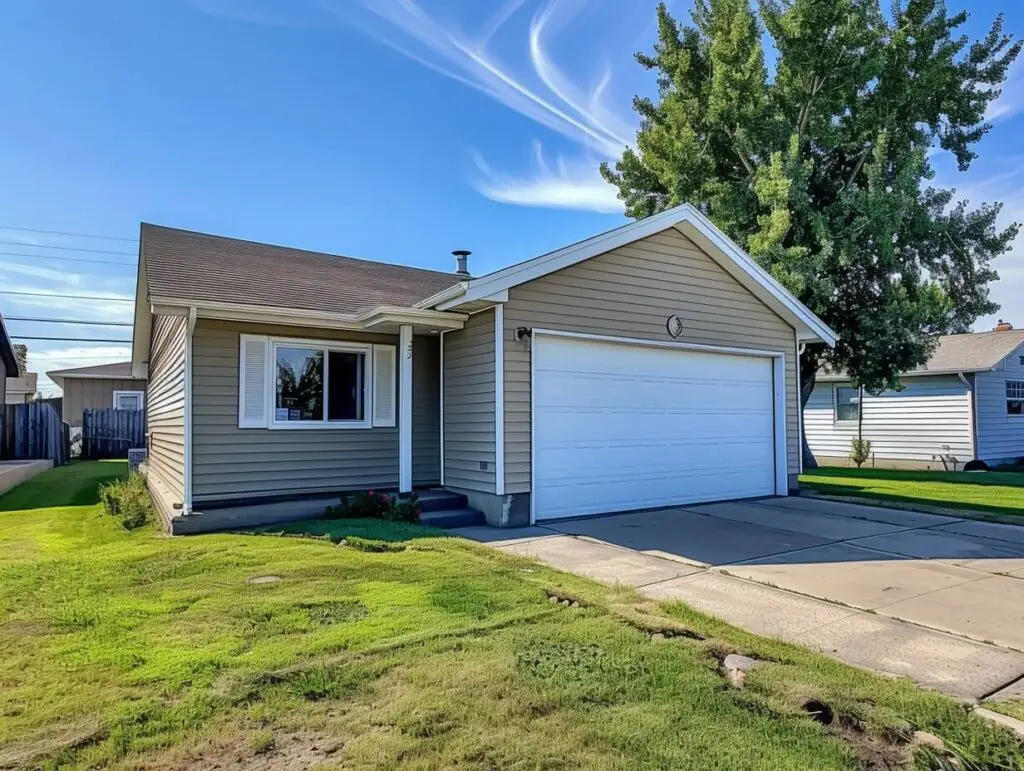
Among various affordable construction options, container homes stand out due to their blend of practicality and innovation. Shipping containers, originally manufactured for freight, are being repurposed into surprisingly stylish and functional residential spaces. These structures are inherently strong, widely available, and relatively inexpensive, making them a solid foundation for a budget-friendly home.
When optimized with thoughtful design and insulation, they can become liveable spaces that challenge the traditional concept of housing.
While the cheapest way to build a house might vary based on location and personal preferences, it typically involves the use of prefab components, cost-effective materials, and a straightforward floor plan to avoid additional costs from complex builds.
Ranch homes, modular homes, and tiny houses are among those that typically cost less due to their efficient use of space and materials. By reducing the square footage and choosing materials wisely, those looking to build a new home can achieve their goal with a much smaller financial outlay.
Cheapest Way to Build a House
Understanding Building Basics
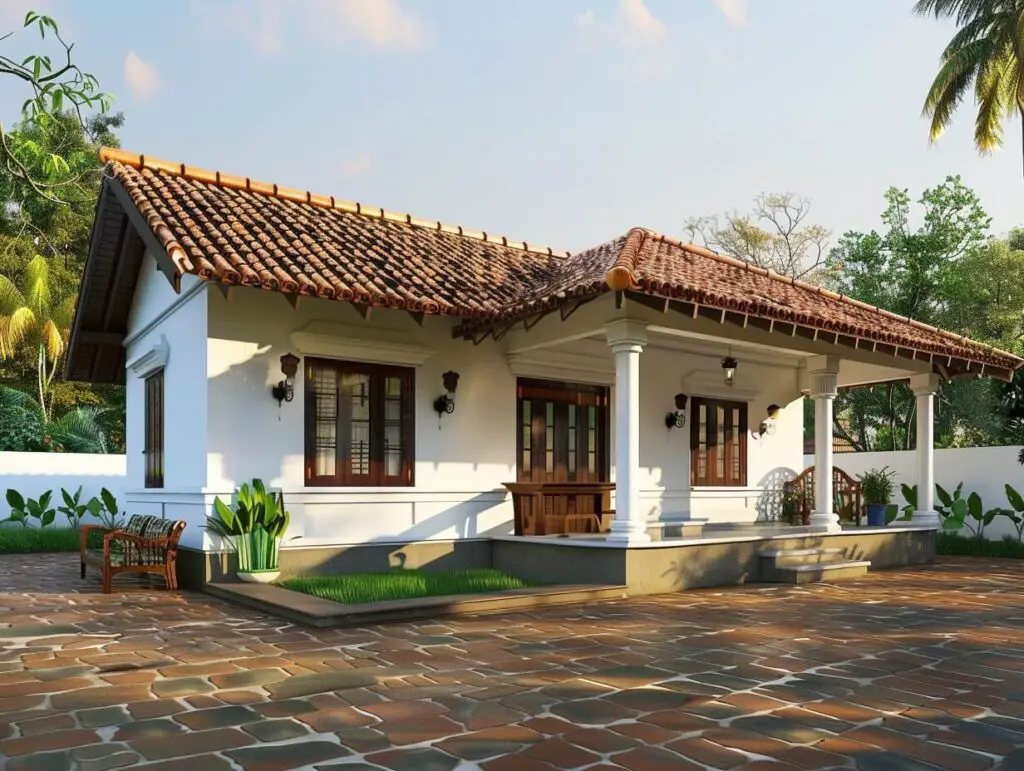
The construction of a house encompasses various methods and the selection of appropriate building materials, each playing a significant role in the overall cost and durability of the structure.
Construction Methods
In the realm of affordable housing, container homes represent an innovative construction method. They are constructed by repurposing shipping containers into livable spaces. Containers as structural elements offer a modular approach and can be stacked or combined in different configurations. Additionally, the building process is often more streamlined as the containers provide a pre-defined structure, which can significantly reduce both construction time and expense.
Another cost-effective construction type is modular homes, where sections of the house are prefabricated in a factory and then transported to the building site for assembly. The production in a controlled environment reduces waste and improves quality control, thus contributing to a lower overall building cost.
Building Material Selection
Selecting the right building materials is crucial for staying on budget without compromising the integrity of the home.
- Cost-Effective Materials: Some commonly used materials that are both affordable and durable include:
- Concrete: Known for its strength and longevity.
- Recycled Steel: Offers robustness and resistance to the elements.
- Insulating Concrete Forms (ICFs): Provide excellent insulation and can contribute to lower energy costs over time.
The use of sustainable materials like bamboo and pre-used or recycled materials can also contribute to savings, both economically and environmentally.
When considering materials for internal and external finishes, options like drywall for interiors and vinyl siding for exteriors also tend to be more affordable while still providing a pleasing aesthetic and reasonable durability.
Financial Planning and Budgeting

Proper financial planning and budgeting are foundational for building a house in a cost-effective manner. It ensures that one’s investment aligns with their financial capabilities and cost of living considerations.
Cost Estimation
The first step in financial planning is Cost Estimation. This includes a detailed assessment of all anticipated expenses, such as labor costs, building costs, and the price of cost-effective materials. For those considering the cheapest type of house to build, container homes offer a budget-friendly alternative given their lower material costs and simplified construction processes.
Funding the Project
Securing adequate funding is critical. This can involve savings or exploring various construction loans designed specifically for building homes. These loans typically cover the cost of land, materials, and labor, and may have different terms compared to traditional mortgages.
Mortgage Considerations
When building one’s own house, mortgage considerations form a pivotal aspect of financial planning. One should have clarity on how the mortgage will transition from a construction loan to a permanent mortgage. Understanding the intricacies of these financial products, such as down payments and equity, is crucial in aligning with the long-term financial commitment of homeownership.
Designing Your Home
When embarking on the journey to build a cost-effective home, an individual must give thought to the design phase as it sets the foundation for both the aesthetics and functionality of the new dwelling. Three critical aspects they should consider are the architectural style, energy efficiency, and customization of their living space.
Choosing the Right Style
For those wishing to build cost-effectively, container homes offer a unique blend of modernity and affordability. These steel shipping containers can be modified to create diverse layouts while maintaining a certain industrial charm. Prefabricated homes, known for their rapid assembly and lower labor costs, represent another favored option. They select styles not just for their visual appeal but also for their potential to reduce construction expenses.
Maximizing Energy Efficiency
An energy-efficient design is pivotal. It includes proper orientation of the house to harness natural light, using materials with high insulation properties, and installing energy-saving systems like solar panels. These strategies contribute to reducing long-term costs associated with heating, cooling, and electricity. For example, designing with ample windows on the southern facade allows for passive solar heating, cutting down on winter energy bills.
Customizing Your Space
Customization doesn’t necessarily entail luxury; instead, it means tailoring a home to the homeowner’s lifestyle to ensure spaces are both functional and cost-effective.
Through smart customization, spaces are designed to be multipurpose—such as combined kitchen and dining areas—or to be easily modified in the future. This approach allows homeowners to build a custom home that uniquely suits their needs without exceeding their budget. Utilizing every square foot efficiently avoids the construction of unused spaces, which translates to lower building costs.
Types of Affordable Housing
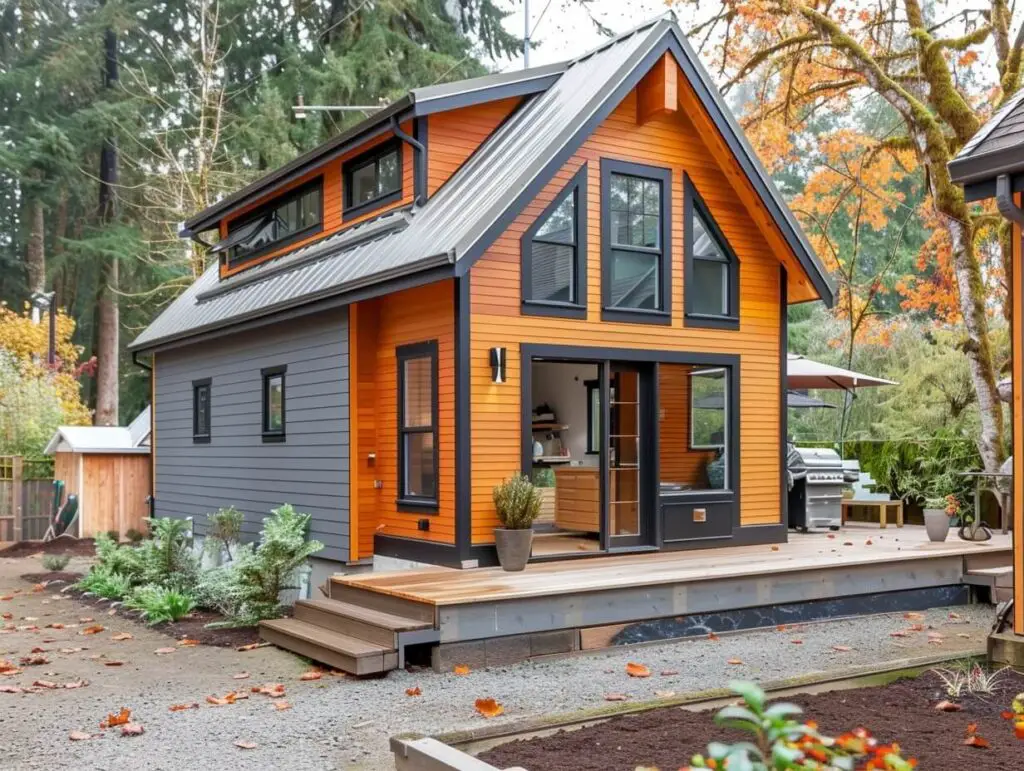
When exploring the most cost-effective methods for house construction, potential homeowners will find modular and prefabricated homes, tiny homes along with container living, and various alternative building styles to be the most budget-friendly options. These housing types often utilize economical building materials and methods that streamline construction processes and reduce labor expenses.
Modular and Prefabricated Homes
Modular homes are constructed in sections at a factory setting and then transported to the building site where they are assembled. This method drastically reduces building time and labor costs. Prefabricated panels also contribute to the efficiency and cost-effectiveness of such homes, with the added benefit of precision in manufacturing. The modular home approach is a smart choice for those seeking a balance between affordability and customizability.
Tiny Homes and Container Living
Tiny homes represent a growing movement towards minimalism and cost savings. A tiny house may be as small as a few hundred square feet, requiring fewer materials and less energy to maintain. Moreover, shipping container homes capitalize on the structural integrity and availability of containers to create innovative and cheap house options.
These container homes embody sustainability by repurposing shipping containers into livable spaces, often incorporating reclaimed materials for added character and environmental benefits.
Alternative Building Styles
Lastly, alternative building styles like barndominiums and one-story ranch-style homes offer affordable building solutions, often blending traditional designs with modern touches.
Barndominiums offer wide-open spaces that can be cost-effective to build and maintain. Utilizing prefab panels and choosing simpler, compact designs can lead to significant savings in these alternative housing styles. The simplicity of a one-story ranch home also offers an efficient and often less expensive route for home construction.
Sourcing Building Materials
Selecting cost-effective building materials is essential for constructing a home on a budget. Homebuilders often look for the balance between affordability, durability, and sustainability when choosing these materials.
Reclaimed and Recycled
Reclaimed wood from demolition sites and salvage stores offers a sustainable option that often comes at a fraction of the cost of new material. Not only does it help in reducing waste, but reclaimed wood also adds character and history to a home. Recycled materials, such as bamboo, are becoming increasingly popular due to their fast renewability and strength.
Affordable New Materials
Recycled and reclaimed materials contribute to sustainability and cost savings. However, certain new materials are known for their affordability.
Concrete sheets and plywood are two examples of new materials that offer cost efficiency for the structure of a home. Meanwhile, vinyl siding is another affordable option for home exteriors. It’s renowned for its low maintenance and longevity.
For those considering alternative housing, container homes are also gaining traction as one of the cheapest materials to build a house. This is because they make use of pre-existing structures, cutting down on construction resources and time.
Constructing Your Home
When constructing a home, it is essential to split the text up into at most two sentences per paragraph. This will help make the text easier to read.
It is also important to remove mid-article conclusion paragraphs and sentences. Repetitive sentences should be removed as well.
Let’s move on to the next section.
Building Permits and Legalities
Before a single nail is hammered, ensuring compliance with local building codes and obtaining the necessary building permits is crucial. This process involves submitting detailed plans and may vary significantly depending on location.
The regulations often influence the construction method. For instance, they determine whether the home can be built using alternative materials such as straw or cob.
Homeowner-builders must be particularly diligent in this phase. Overlooking a legal requirement can result in costly delays or fines.
The Building Process
The actual building process begins with framing, which is the skeleton of the home. Decisions made during this phase, like opting for a factory-built frame versus on-site construction, affect not just the timeline but also the budget.
A growing trend is the use of shipping containers for constructing homes. This can be a cost-effective and weather-resistant option. However, incorporating these into the design must be planned from the onset, as they require specific foundations and reinforcement.
Using Professional Contractors vs DIY
The decision of whether to hire professional contractors or embark on a DIY “build your own house” project hinges largely on the individual’s skills and experience.
While doing it oneself may seem like a cost-saving strategy, it is essential to realistically assess one’s capabilities. This is especially important for critical jobs that can impact the integrity of the home, such as electrical and plumbing work.
On the other hand, leveraging the expertise of professionals can often ensure that the construction is completed efficiently and up to code.
Finishing Touches
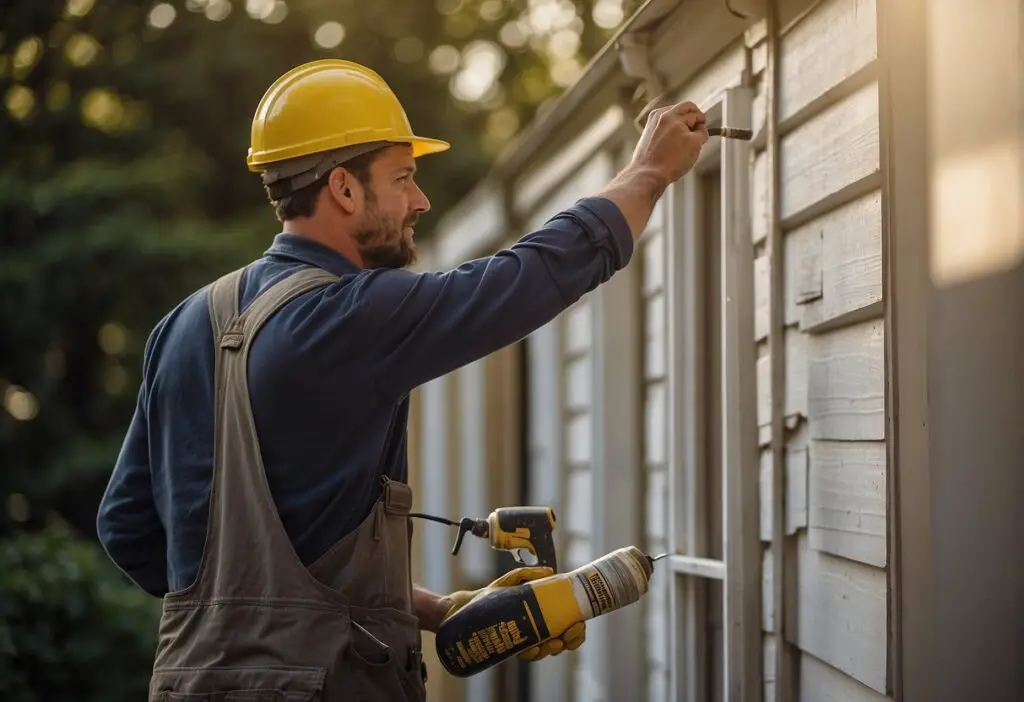
After the structure of a house is completed, the finishing touches can significantly enhance its appearance and value. Both the exteriors and interiors play a crucial role in turning a basic structure into a cozy, attractive home.
Landscaping and Exteriors
Landscaping and exterior finishing can make a dramatic impact on a home’s curb appeal.
Thoughtful landscaping boosts not only the aesthetic value but can also improve the environmental efficiency of a home.
Homeowners can opt for low-maintenance native plants or xeriscaping to minimize water usage.
When it comes to the exteriors of container homes, the trend often leans towards a minimalist design that complements the industrial aesthetic.
- Landscaping Tips:
- Use native plants for easier maintenance and sustainability.
- Consider drought-resistant plants if water conservation is a priority.
- Exterior Design for Container Homes:
- Choose rust-resistant paint to maintain the industrial look while ensuring longevity.
- Incorporate large windows for natural light and an open feel.
Interior Design and Finalizing
Interior design is where homeowners can really express their personality and taste.
For container homes, the interior often features innovative storage solutions and multi-functional furniture due to the compact space.
In comparison to existing homes, new construction allows for customization like built-in shelves or wiring for smart home devices before wall finishes are applied.
With buying a home, one has the option to renovate interiors but within the constraints of the existing structure.
- Interior Highlights:
- Open-plan living areas with multi-purpose furnishings for space maximization.
- Neutral colors for walls to create a sense of spaciousness within small areas.
- Finalizing a New Home:
- Implement energy-efficient lighting fixtures for long-term savings.
- Finish with personal touches such as artwork or family photos to create a homely atmosphere.
Savings and Benefits
Building a home with cost-efficiency in mind offers not only immediate financial relief but can also lead to significant long-term savings. Individuals can benefit from reduced construction costs, energy efficiency, and even possible government incentives.
Long-Term Cost Savings
Building an energy-efficient home is one of the most effective methods for achieving long-term cost savings.
By utilizing advanced insulation techniques, energy-efficient windows, and smart home technologies, homeowners can significantly reduce their monthly utility bills.
Additionally, opting for less traditional construction methods, such as building with shipping containers, can decrease the initial building costs.
These container homes often have a smaller footprint, which translates to lower material costs and potential savings in heating and cooling expenses.
Government Incentives
Homeowners who invest in energy efficiency may be eligible for various tax credits and rebates.
The government often offers these financial incentives to encourage the construction of homes that are more environmentally friendly.
Homebuilders who incorporate solar panels, high-efficiency appliances, and other green technologies can take advantage of these programs to offset some of the upfront costs.
It’s vital to research and apply for these incentives during the planning stages of home construction to maximize potential savings.
Frequently Asked Questions
What are some affordable building methods for a house?
- Container homes: Utilizing shipping containers can be cost-effective. Prices for the containers themselves can vary.
- Prefab components: Prefabrication can save on labor and time, reducing overall costs.
- Simple design: A square or rectangular floor plan is more cost-efficient and easier to construct than more complex designs.
Is it cheaper to build up or out when constructing a home?
Building upwards (multi-story) tends to be less expensive than building outwards (single-story with greater footprint). This is due to reduced foundation and roofing costs.
How can I save on material costs?
- Bargain shopping: Seek discounts on overstocked or discontinued items.
- Recycled materials: Consider reclaimed wood or recycled metals to save money and add character.
- Energy-efficient products: While initially more expensive, these can lead to long-term savings.
Can being my own general contractor reduce costs?
Yes, individuals may save by managing their own home construction projects. However, they should be aware of the time commitment and expertise required to do so effectively.
How does keeping water usage areas together save money?
Clustering areas like the kitchen and bathrooms can lower the cost of plumbing installation and materials. This is done by minimizing the distance between connections.




